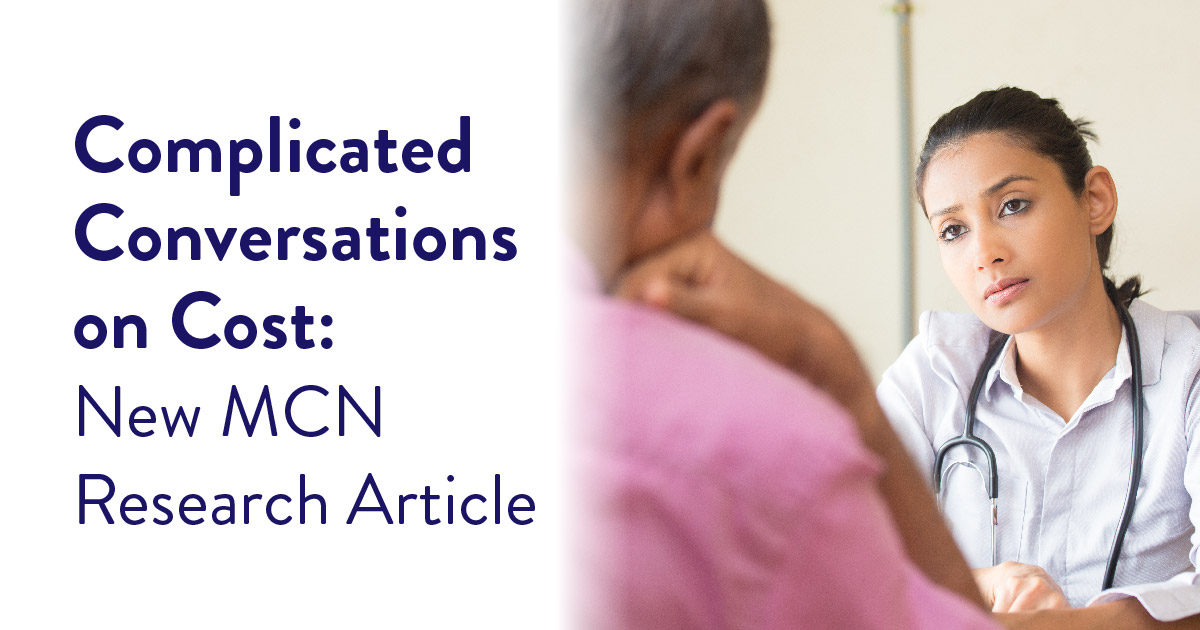Complicated Conversations on Cost: New MCN Research Article

How many clinicians hold a conversation with patients around the potential costs of this visit’s care? For low-income patients, who have little to no savings, the fear of paying for a health crisis increases the anxiety and stress around the diagnosis itself, including a chronic condition like diabetes. And yet, according to a paper published this week in the Annals of Internal Medicine, discussion around cost of care occurred during less than half of observed patient encounters, and only 11.9 percent of physician-patient encounters included a discussion of the cost of treatment plans. The Robert Wood Johnson Foundation-funded research was conducted by Douglas D. Bradham, DrPH, MA, MPH, a health economist and policy expert, and Principal Investigator of Migrant Clinicians Network’s “Clear on the Cost” study; Deliana Garcia, MA, MCN’s Director of International Projects and Emerging Issues; Alma Galván, MCN’s Senior Program Manager; and Corey Erb, MCN’s former Research Assistant and Executive Associate.
“We suspected that clinicians in Federally Qualified Health Centers assumed their patients were covered and their out-of-pocket costs were affordable,” added Dr. Bradham. “Neither assumption is supported in independently-collected observations of primary care as well as specialty encounters in 2016. ”
This new MCN publication joins a growing body of research pieces and articles detailing the complexity around having a cost of care conversation. Last week, the New York Times published a piece entitled, “They Want It to Be Secret: How a Common Blood Test Can Cost $11 or Almost $1,000.” The Times article dives into the complexity of medical costs, using the routine metabolic blood panel as the example: “Some insurance companies provide consumers with tools to help steer them away from the $450 test, but in many cases you won’t know the price your insurance company agreed to until you get the bill.” The patient’s costs are an additional layer of expense that often surprises clinicians.
Discrepancies in health care costs can change over time, tangling up an already complex picture of health coverage and patient responsibility differences, options in procedures and prescriptions, and in- and out-of-network care. Most patients who need to have cost-of-care conversations are not well and may be adjusting to the realities of new prescription regimens, long-term care needs, and procedures, and their impacts on day-to-day living, or the “indirect” costs of care, like loss of work or transportation costs. Additionally, clinicians and clinic staff have a limited patient encounter window, during which diagnosis and treatment must be fully discussed, in addition to the related cost of care.
MCN researchers observed clinical encounters, from check-in through discharge, and then conducted patient interviews and provided the clinicians with post-visit surveys, at two multi-site health centers in Texas and Pennsylvania. Of the 67 encounters with complete data, 38 of them (or 56.7 percent) had no mention of cost by clinic staff, clinicians, or patients. Indirect costs of care were mentioned in just 2.9 percent of visits.
“The nation’s largest network of primary care providers could serve as a fulcrum to enhance transparency and clarity about all costs of care,” concluded Bradham. “There are implications that these costs may reduce patients’ compliance with recommended care and lower providers’ positive outcomes, although these connections were not part of this current study. ”
Read the article at the Annals of Internal Medicine: https://annals.org/aim
Like what you see? Amplify our collective voice with a contribution.
Got some good news to share? Contact us on our social media pages above.
Return to the main blog page or sign up for blog updates here.
- Log in to post comments
